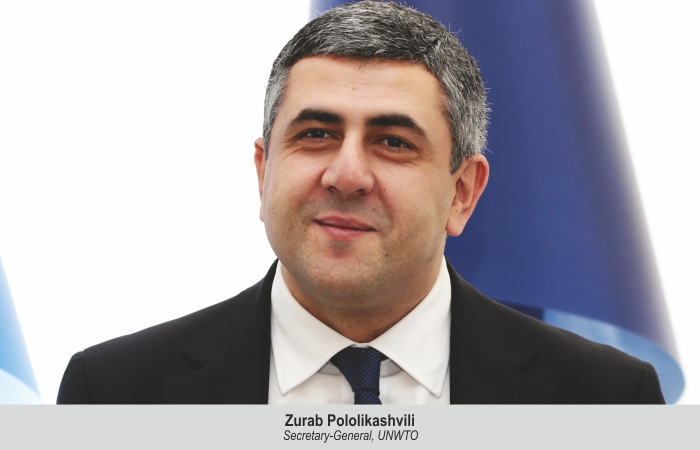According to new data UNWTO, more than 900 million tourists travelled internationally in 2022 – double the number recorded in 2021, though still 63 per cent of the pre-pandemic levels. Every global region recorded notable increase in international tourist numbers, even as the Middle East enjoyed the strongest relative increase.
TT Bureau
The Middle East enjoyed the strongest relative increase as passenger arrivals climbed to 83 per cent of the pre-pandemic numbers. Europe reached nearly 80 per cent of the pre-pandemic levels, as it welcomed 585 million arrivals in 2022. Africa and the Americas both recovered about 65 per cent of their pre-pandemic visitors, while Asia and the Pacific reached only 23 per cent, due to stronger pandemic-related restrictions which have started to be removed only in recent months. The first UNWTO World Tourism Barometer of 2023 also analyses performance by region and looks at top performers in 2022, including several destinations which have already recovered 2019 levels. After stronger than expected recovery in 2022, this year could see international tourism arrivals return to pre-pandemic levels in the Middle East and Europe. Tourists are nonetheless expected to increasingly seek value for money and travel closer to home in response to the challenging economic climate. Based on UNWTO’s forward-looking scenarios for 2023, global international tourist arrivals could reach 80 per cent to 95 per cent of pre-pandemic levels this year, depending on the extent of the economic slowdown, the ongoing recovery of travel in Asia and the Pacific and the evolution of the Russian offensive in Ukraine, among other factors. UNWTO anticipates a strong year for the sector even in the face of diverse challenges including the economic situation and continued geopolitical uncertainty.
UNWTO Secretary-General Zurab Pololikashvili said: “A new year brings more reason for optimism for global tourism. UNWTO anticipates a strong year for the sector even in the face of diverse challenges including the economic situation and continued geopolitical uncertainty. Economic factors may influence how people travel in 2023 and UNWTO expects demand for domestic and regional travel to remain strong and help drive the sector’s wider recovery.”
UNWTO foresees the recovery to continue throughout 2023 even as the sector faces up to economic, health and geopolitical challenges. The recent lifting of COVID-19 related travel restrictions in China, the world’s largest outbound market in 2019, is a significant step for the recovery of the tourism sector in Asia and the Pacific and worldwide. In the short term, the resumption of travel from China is likely to benefit Asian destinations in particular. However, this will be shaped by the availability and cost of air travel, visa regulations and COVID-19 related restrictions in the destinations. By mid-January a total of 32 countries had imposed specific travel restrictions related to travel from China, mostly in Asia and Europe. At the same time, strong demand from the United States, backed by a strong US dollar, will continue to benefit destinations in the region and beyond. Europe will continue to enjoy strong travel flows from the US, partly due to a weaker euro versus the US dollar.
 TravTalk Middle East Online Magazine
TravTalk Middle East Online Magazine





